I flew out by myself in January 2024 and joined a two-week tour around Vietnam with travel company TruTravels. This, I must admit, seemed far less daunting than when I’d travelled solo to Bolivia for a South American adventure several years ago. Now, I was ready to head the other way across the world and get a taste of Asian culture.
My tour began in Vietnam’s south, in the buzzing metropolis of Ho Chi Minh City; and, from there, I made my way up the country towards the capital, Hanoi, in the north – with various stops along the way.
Vietnam’s unique shape makes for a great deal of variety – both in terms of weather, sights, and culture – and it was wonderful to get a taste of so many different regions. From the peaceful solitude of Ha Long Bay to the sensory overload of Ho Chi Minh City, here are six highlights from my travels in Vietnam.
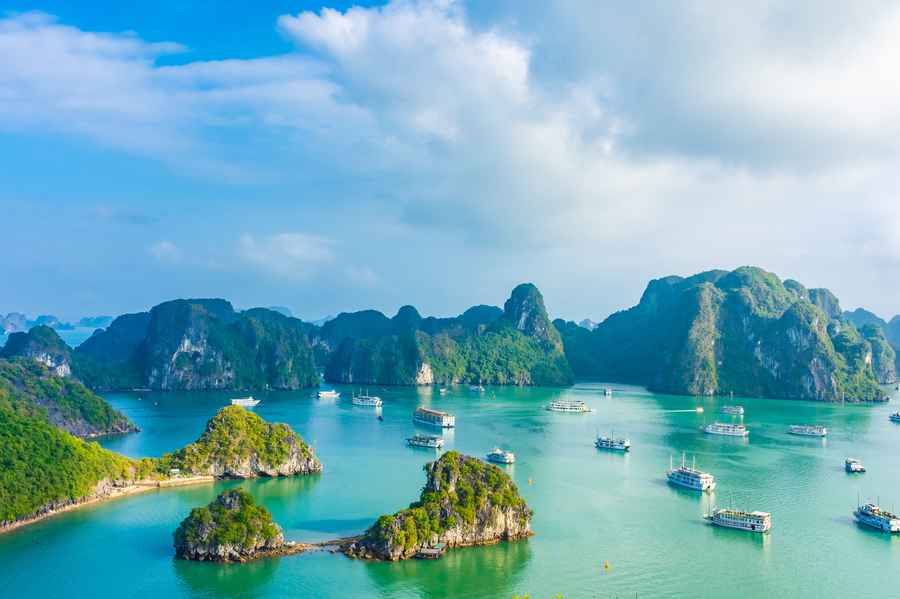
Ha Long Bay is a world-famous UNESCO World Heritage Site and northern Vietnam’s most popular tourist destination. Here, imposing limestone pillars tower over a collection of nearly 2,000 tiny islands, which are surrounded by turquoise waters. It really is as magnificent in person as it looks in the pictures.
Our experience involved an overnight stay on a boat cruise, which, set amid nothing but blue skies and sparkling water, was undoubtedly the biggest highlight of my trip.
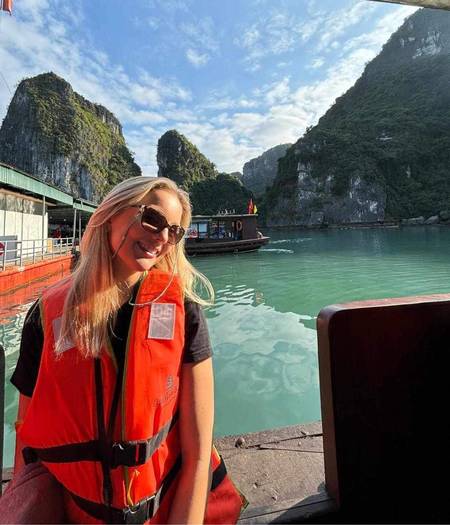
We kayaked and boarded row boats, where we were able to get up close to the unique geology and aesthetics of Ha Long Bay.
For panoramic views of the Bay, I’d highly recommend climbing up Soi Sim Mountain on Soi Sim Island. The steep climb of 400 or so steps might seem uninviting, but the views are worth it. Plus, you can look forward to relaxing on the beach that sits directly below with an ice cream immediately after. Soi Sim Island is considered to be the most unspoilt island in Ha Long Bay because of its beautiful vegetation and lack of human impact.
Inside Ha Long Bay’s sunken limestone towers are also a vast collection of ancient caves and grottoes. We were lucky enough to venture through the largest and most renowned of these: Sung Sot Cave. Sung Sot is so breathtaking that the French named it the ‘Surprise Grotto’ – and surprise is definitely an appropriate description of how I felt after walking in.
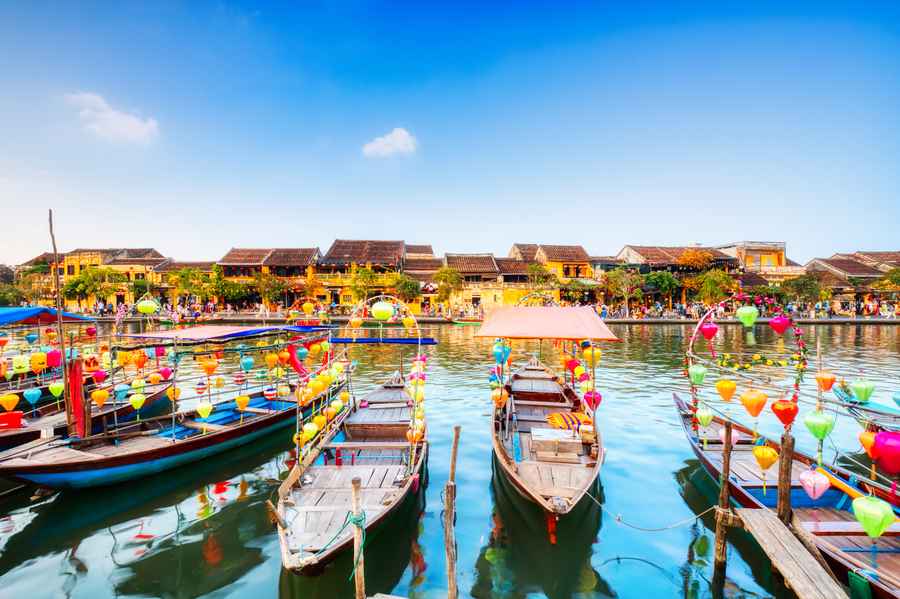
Hội An, located on the east coast of central Vietnam, was once a major port. The town’s 15th-century street plan and magnificent architecture have been maintained, despite urbanisation – and there are over 800 preserved ancient buildings to explore here.
Hội An is famous for being a melting pot of indigenous and foreign cultures, including Japanese, Chinese, Portuguese, and French – which is part of the reason why the town was declared a UNESCO World Heritage Site in 1999. The contrast of cultural influences is certainly something you feel as you wander around the pretty town, as elegant French balconies sit alongside vibrant Chinese temples.
The streets are peaceful, full of character, and lined with colourful lanterns; and the endless amount of souvenir shops, inviting restaurants, and lively bars means there’s plenty to do. Hội An is also a town of tailors, and it’s difficult to find a stretch of road without passing one by. If you have the time, stepping inside one of these stores, meeting the friendly staff, and browsing their beautiful clothes catalogues is a lovely experience.
In the evenings, we tried and tested some of Hội An’s most praised restaurants (of which The Hoianian was a favourite!). One night we also took a boat along the river to place lanterns in the water. For those of you who have ever seen the film Tangled, you might have a rather specific (and relatively accurate!) image in your mind right now.
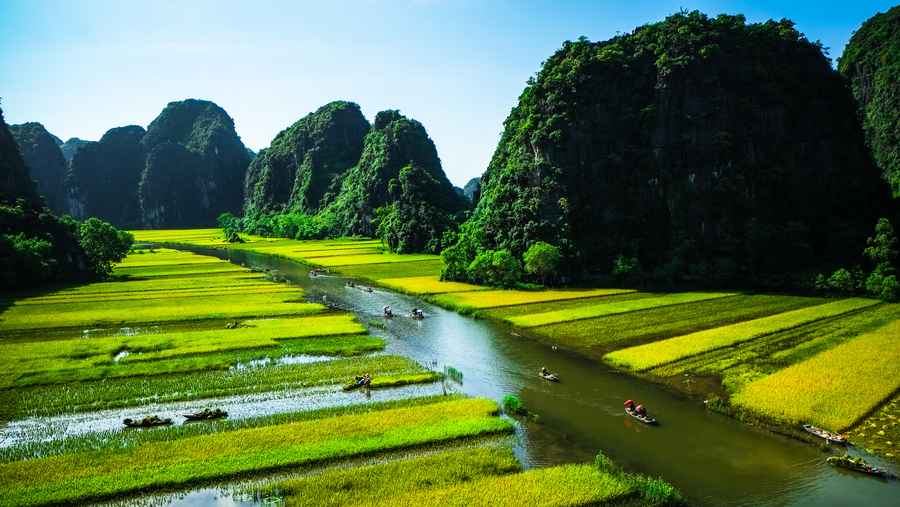
Ninh Binh, known locally as the ‘Ha Long Bay on Land’, is a mesmerising region in northern Vietnam, located two hours south of Hanoi. The 12-hour sleeper train that we boarded from Huế to get here was an experience in itself. But while it wasn’t the best sleep of my life, the journey was memorable, and made completely worth it by the charming character of Ninh Binh.
Ninh Binh as a whole is quite large, but we were based in the smaller region of Tam Coc.

Here, limestone mountains rise up from the rice paddies, and glistening rivers wind their way through the gaps.
One of the highlights of our stay here was boarding a sampan boat tour. This proved to be an unrivalled way to take in Ninh Binh’s magnificent landscape. Each sampan is guided by a local who rows with their feet, not their hands! We were expertly transported along peaceful waterways, past vast limestone towers, and underneath dripping grottoes.
A short drive away, we also ventured into the otherworldly landscape of Ninh Binh’s Mua Caves. After a climb of 500 or so steps to the top of the mountain, we were met with awe-inspiring views across the vast rice paddies and rolling hills.
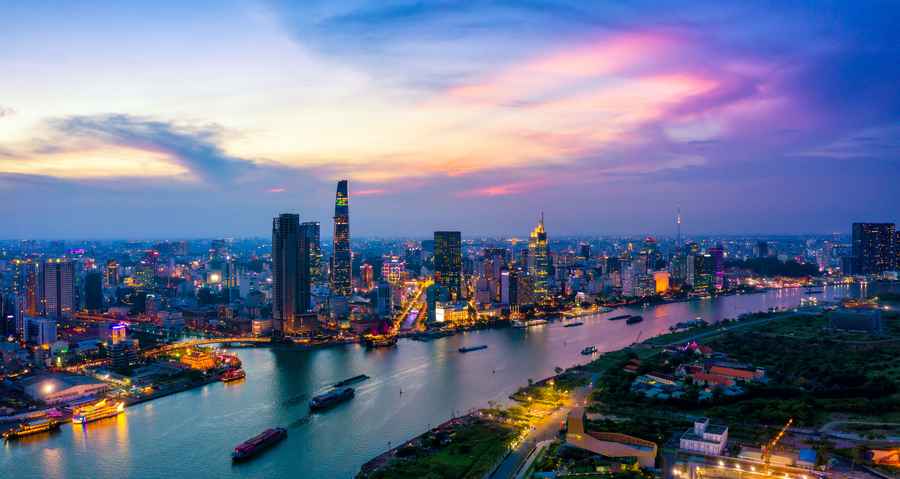
With its bright lights, historic landmarks, and endless stampede of motorbikes, Ho Chi Minh (formerly known as Saigon) is Vietnam’s largest city. Perhaps unexpectedly, I was much more fond of Ho Chi Minh than I was of Vietnam’s capital, Hanoi, which I found to be a bit grotty.
Two days proved plenty of time to explore many of the city’s highlights. Of course, there would’ve been plenty more to see, but Ho Chi Minh is also an overwhelming city and not necessarily somewhere you’d come to kick back and relax! Our first stop involved a bus ride out of town to explore the Cu Chi Tunnels.
This extensive subterranean system was dug as a military base and weapon for combat during the Vietnam War (1955-1975). I was astonished to find out that entire underground villages, living areas, kitchens, hospitals, and ammunition storage units were encompassed here. Though, I must admit, I passed on the opportunity to crawl through them myself!
On our second day, we headed to the War Remnants Museum; an imposing building crammed with artefacts and photographs documenting the effects of war throughout Vietnam’s history. The museum’s main focus is on the Vietnam War, but it also covers the country’s 1,000 years under Chinese occupation and nearly 70 years as a French colony.
Photographs of the thousands of casualties and devastating impact of Agent Orange – the herbicide mixture used by America during the war – were completely sobering, and after wandering around for 45 minutes or so, I was ready to leave. Nevertheless, the museum is an eye-opening visit, which provides important insight into Vietnam’s history – so, it’s worth a visit if you ever find yourself in Ho Chi Minh.
Other highlights included wandering the city’s bustling markets, sipping on wonderfully cheap mojitos in rooftop bars, and a particularly delicious crab curry dinner at Den Long restaurant. Our tour of Ho Chi Minh ended with a trip to the city’s famous post office, where we had the opportunity to send a letter back home.
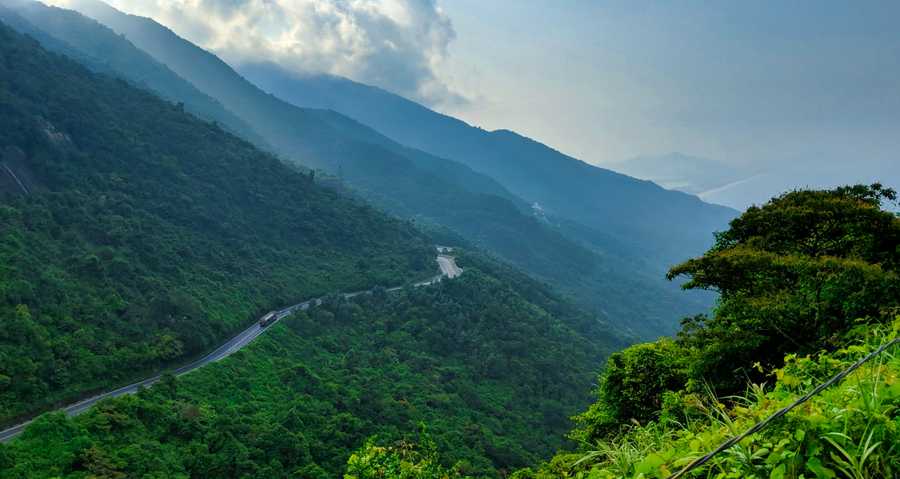
The Hai Van Pass is a contender for being one of the most famous roads in Vietnam. This short but scenic road winds around the mountains that line the East Sea and connects the central cities of Hội An, Đà Nẵng, and Huế.
Throughout history, the Hai Van Pass has served as a political and geographical boundary between ancient kingdoms, as well as a strategic military post during times of war. The route’s popularity as a fantastic road trip was levelled up by BBC Top Gear’s 2008 Vietnam Special, which dubbed it “a deserted ribbon of perfection – one of the best cost roads in the world.”
‘Hai Van’ roughly translates as ‘Sea of Clouds’ in Vietnamese, which is an apt description of this misty mountain road that offers fantastic views of dense jungle and seascapes.
That said, at the end of our two-hour journey from Đà Nẵng to Huế on what wasn’t the warmest day, it’s safe to say that we were ready for it to end! Our time on the Hai Van Pass itself was pretty short and the rest of the journey took us along a series of relatively uninspiring roads. Nevertheless, travelling the Hai Van Pass was a fun and unique experience, which I imagine is even better on sunnier days!

Huế is a charming city in central Vietnam famed for its historical past, fantastic cuisine, and majestic temples.
From 1802 to 1945, Huế was the imperial capital of Vietnam under the Emperors of the Nguyen Dynasty. It’s weathered significant damage over the years, including American shelling during the Vietnam War, and was declared a UNESCO World Heritage Site in 1993.
With its protected status, Huế holds unique insights into Vietnam’s royal past and is the ideal place to explore beautiful palaces and temples.
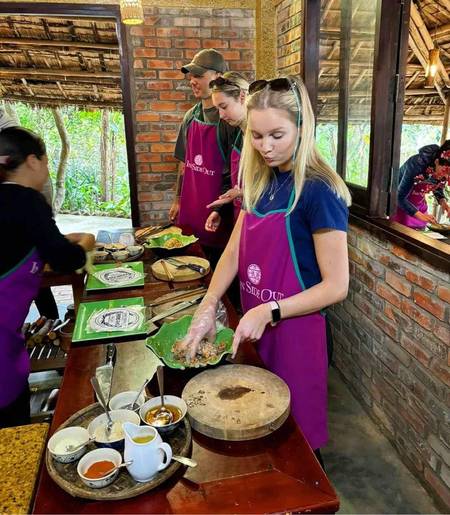
The religious site of Thien Mu Pagoda was impressive, and the gardens were a wonder to walk around. Though, the city’s most famous site is undoubtedly the Imperial Citadel, which was once the emperors’ forbidden city. The Imperial Citadel sits on the edge of the Perfume River and hosts an impressive series of temples, moats, gates, and pavilions.
However, the highlight of my stay in Huế was a cooking class with Huế Inn Side Out. This wonderful escape from the busyness of town provided us with a fantastic introduction to creating signature Vietnamese dishes – including spring rolls and lemongrass chicken – which we then sat down to enjoy in beautiful surroundings.
restless.co.uk
Reader Comments
Newer articles
Older articles